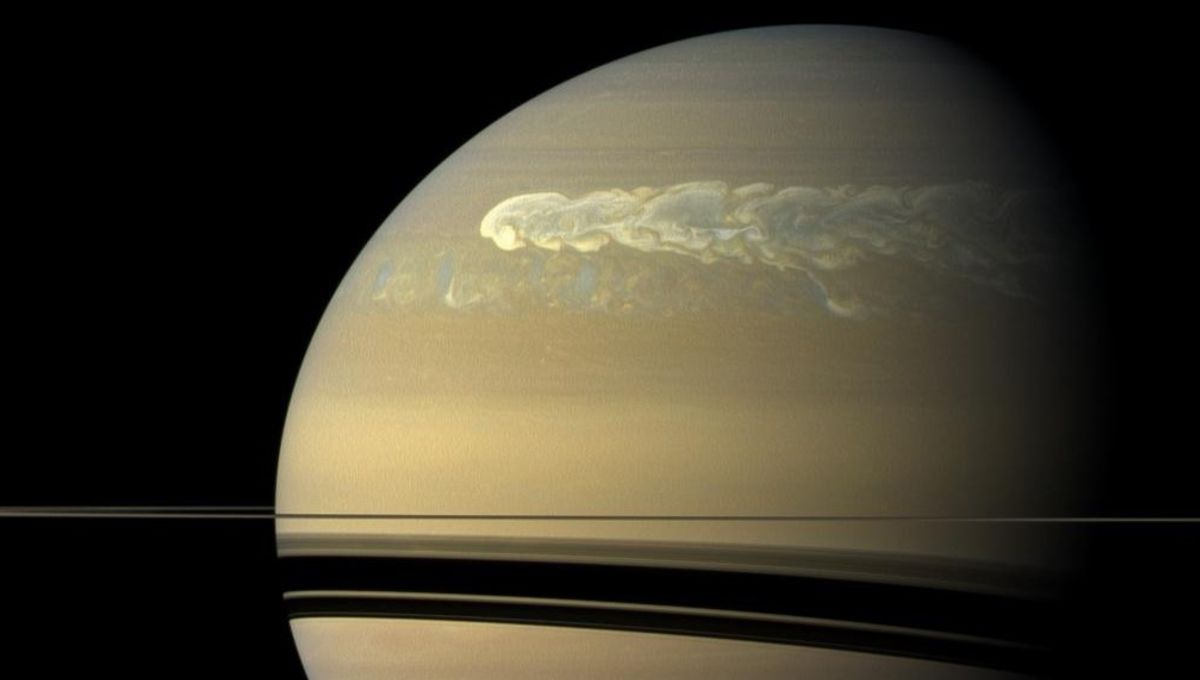
Saturn’s atmosphere might not be as featureful as Jupiter’s but it is not as quiet as first impressions might suggest. There is, of course, the unique color-changing hexagonal polar vortex, but deep beneath the clouds of methane, water, and ammonia lies a turbulent environment where incredible megastorms can form, change, and alter the planet for centuries.
Cassini first studied an impressive megastorm forming on Saturn in 2010, and five more have been documented since then. Curiously, they appear periodic, happening every 20 to 30 years. Their exact formation mechanism is still unknown but new observations have revealed some new insights and even a new storm.
Using radio observations, astronomers peered beneath Saturn’s clouds to see where the storms form. They found plenty of evidence of the mid-latitude giant storms the planet is known to have, but they also found a series of storms around the equator that are up to 100 years old, and even an unreported polar storm that might be even older.
“At radio wavelengths, we probe below the visible cloud layers on giant planets. Since chemical reactions and dynamics will alter the composition of a planet’s atmosphere, observations below these cloud layers are required to constrain the planet’s true atmospheric composition, a key parameter for planet formation models,” explained Professor Cheng Li, from the University of Michigan, in a statement.
“Radio observations help characterize dynamical, physical and chemical processes including heat transport, cloud formation and convection in the atmospheres of giant planets on both global and local scales.”
The new observations show that the 2010 storm split into two, moving in opposite directions but both in a southward direction, leaving a gap at 43 degrees North. Quite the intriguing puzzle for how these incredible atmospheric phenomena form and behave when it comes to the extreme environments of the giant planets.
The giant planets in the Solar System are much bigger than our planet, but few things really put the size difference in stark context than their storms. Neptune’s Great Dark Spot is a hurricane as big as our planet, and Jupiter’s Great Red Spot would fit three Earths inside it. Uranus may be similar to Saturn in having a uniform system but infrared light reveals it also has storms across its surface.
“Understanding the mechanisms of the largest storms in the Solar System puts the theory of hurricanes into a broader cosmic context, challenging our current knowledge and pushing the boundaries of terrestrial meteorology,” Prof. Li said.
The study is published in Science Advances.
Source Link: 100-Year-Long Storms And Effects Of Planet-Sized Hurricanes Seen On Saturn